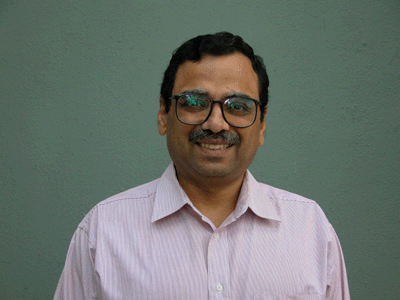
After completing a five-year integrated M. Sc. (Hon) programme in Biological Sciences at the Birla Institute of Technology and Science in Pilani in 1978 Durgadas P. Kasbekar (b 1956) earned a Ph. D. in 1984 from the State University of New York at Stony Brook, USA. His doctoral research was on nystatin resistance in dictyostelids (cellular slime moulds, e.g., Dictyostelium discoideum). He did postdoctoral research at the Albert Einstein College of Medicine in the Bronx, New York, USA on Drosophila mutations affecting voltage-gated ion channels. He joined the CCMB in June 1989, and was there until July 2012, when he moved to assume the first Haldane Chair at CDFD.
Kasbekar’s research has focused on three areas. In one he studies mechanisms that protect genomes against parasitic DNA. RIP mutates repeated DNA sequences in fungi, and meiotic silencing shuts down the expression of mis-located genes. He developed an assay for RIP in Neurospora and used it to identify and map RIP-defective mutants, and he showed that a majority of wild Neurospora strains are moderate suppressors of meiotic silencing. In the second area, he discovered that the lamin B receptor, a protein of the vertebrate nuclear envelope that tethers the nuclear lamina and chromatin to the inner nuclear membrane, also has a sterol biosynthetic activity. His group used site-directed mutagenesis to identify amino acid residues essential for this activity. In the third area, he studied how dictyostelids respond to isoflavonoids. Dictyostelids are free-living soil amoebae that feed on bacteria. Isoflavonoids are antimicrobial compounds produced by leguminous plants at sites of microbial infection and injury. These studies led him to propose a novel plant-microbe interaction wherein leguminous plants use isoflavonoids to recruit soil amoebae to clear bacteria from the vicinity of root lesions. He is a Fellow of the Indian Academy of Science, and Editor, Journal of Biosciences.